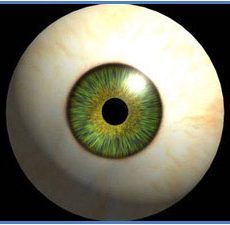
Visual vocabulary
San Cristóbal: (0276) 343-7209 | Caracas: (0212) 576-4038 | Ciudad de México: +52-55-5574-9398 | Puebla: +52-222-290-7591

Glaucoma is an eye disease characterized by progressive optic neuropathy or not associated with increased intraocular pressure, which leads to chronic visual field loss and vision.
Who can have Glaucoma?
People at risk for glaucoma are:
1. Family history of glaucoma (familial predisposition)
2. People over 40 years.
3. Hyperopia or high myopia.
4. Diabetes.
5. Abuse of steroids for prolonged time.
6. Ocular trauma, recent or old eye bruises.
What causes discomfort Glaucoma?
Depending on the type of glaucoma symptoms can be:
1. Primary Open Angle Glaucoma: This is the most common and most patients feel no discomfort. Some may have a headache, eye pain, progressive decreased vision, if not treated early by an ophthalmologist can progress to blindness.
2. Primary angle closure glaucoma: It is best known as the patient has symptoms suddenly of severe pain in the eye and face, nausea, vomiting, dizziness, malaise, progressive decreased vision. The patient should attend emergency to an ophthalmologist for immediate medical treatment.
3. Secondary glaucoma can be combined to an eye infection, eye inflammation (uveitis) ocular tumor, cataract, ophthalmic vein obstruction, eye surgery, bleeding inside the eye, chronic steroid use.
4. Congenital glaucoma appears one in 10,000 births, by defect in the outflow way of aqueous humor. In the first weeks or months of life the child has watery eyes, intolerance to light, enlarged eye. It is imperative to be treated as early as possible by an expert Ophthalmologist in Glaucoma.
How you can diagnose Glaucoma?
The only way to diagnose it is the review by an ophthalmologist to perform the following assessments:
1. Visual acuity test.
2. Measurement of intraocular pressure.
3. Complete study of the eye.
4. Study of the visual field, which measures the peripheral vision, loss is a sign of glaucoma.
How is Glaucoma treated?
The main goal of glaucoma treatment is to lower eye pressure. The first step is to use medical treatment with drops, if the pressure fails to control must be passed to surgical treatment either laser, filtering surgery (opening a channel for the liquid to drain) or valves.
By decreasing the pressure, progressive optic nerve damage and visual field is controlled. That is why treatment (drops) and continuous evaluation must be performed all life. The possibilities are greater when an early diagnosis is made, most glaucoma do not produce discomfort, the only chance to find out is through regular reviews of their eyes.
We recommend a routine annual visit to the ophthalmologist and keep healthy eyes.
By: Dr. Beatriz Antzoulatos.